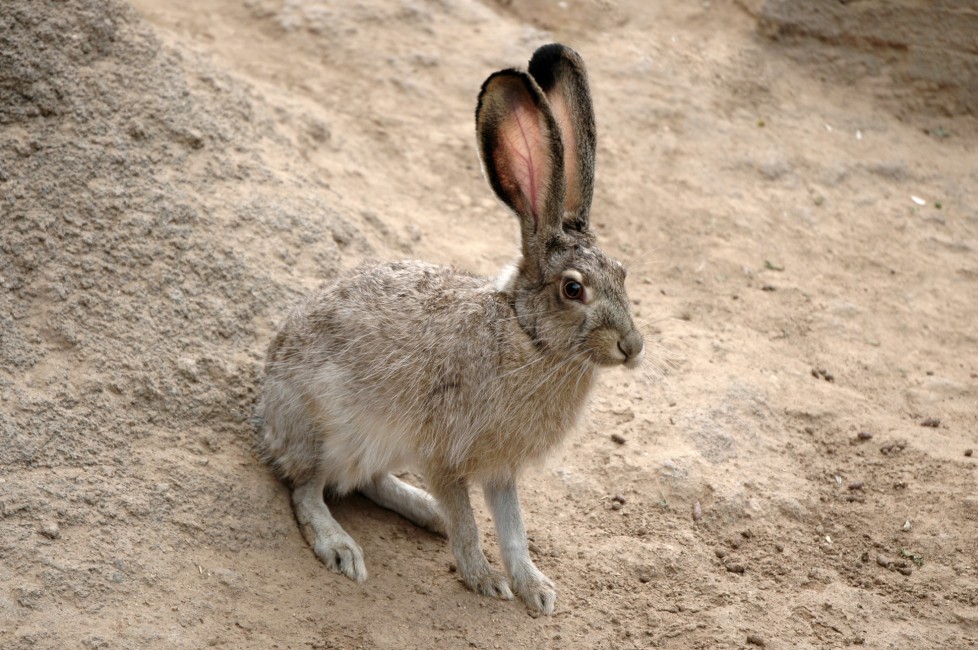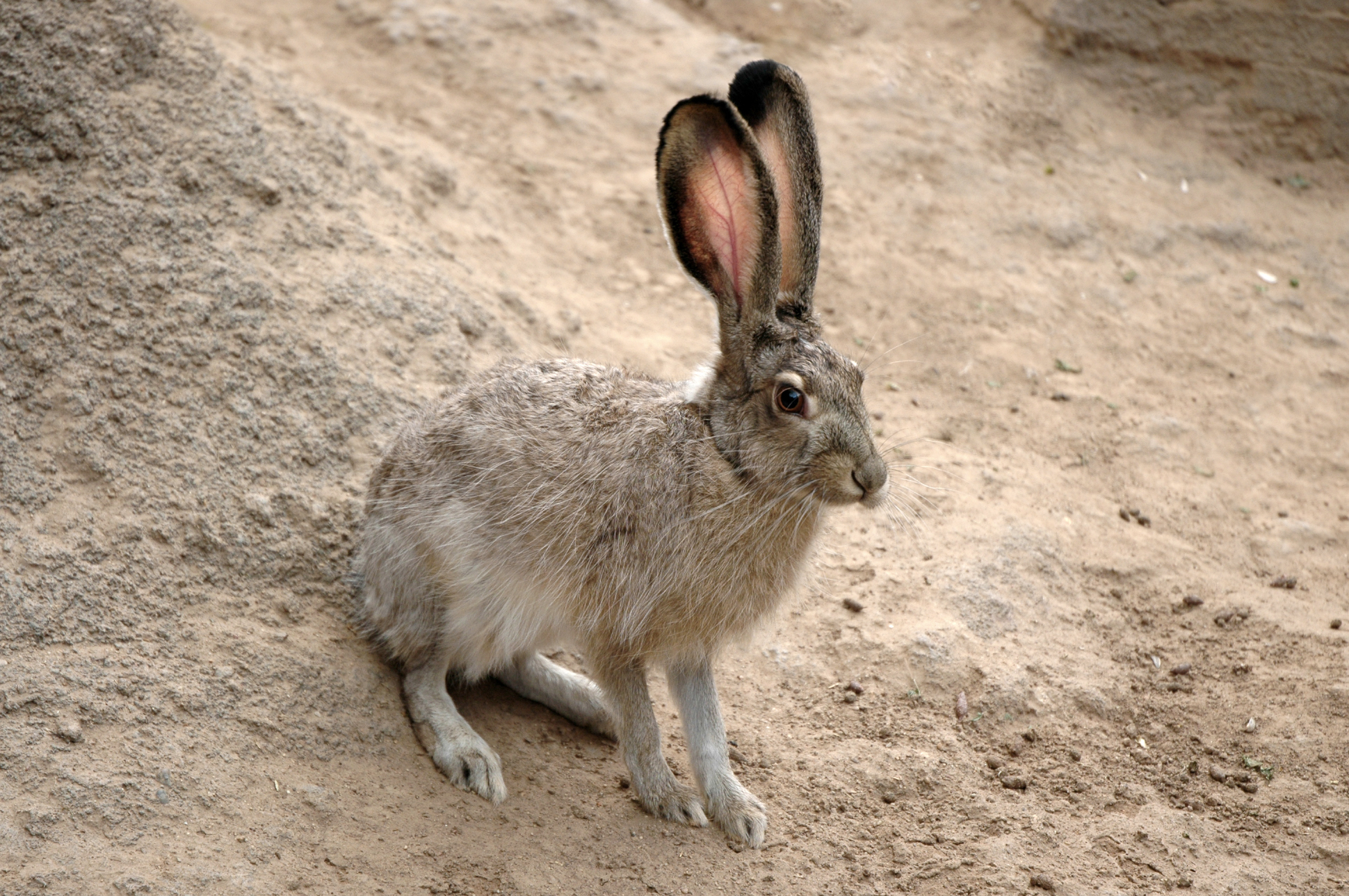
January 26, 2015
Rabbit or Hare?
- as seen by -
 Barbara Russo
Barbara Russo
Looks can be deceiving: Is it a rabbit or hare?
Too often, rabbits are incorrectly called hares, and vice versa. It’s an understandable mistake, since both animals look so similar. Both are lagomorphs with long ears, big feet, and adorable faces, but they are actually two completely different species.
The best way to distinguish rabbits from hares is to look at their young. Baby hares – called leverets – are born precocial, meaning they can fend for themselves right away. At birth, they can see, they’re fully furred, and ready to leave the nest. It helps to have these abilities because they are born above ground with no physical barriers to offer protection from predators. It’s a much different story when it comes to rabbits.
Rabbits are born altricial. They rely on their mothers for quite a while before they can leave their nests or burrows. Baby rabbits – known as kits – are born hairless and cannot see when they enter the world.
There are subtle differences between adult rabbits and hares, too. Rabbits are generally smaller. Hares have longer ears and bigger feet. Their back legs are long and strong, more so than rabbits. Of course, anyone who’s been kicked by their pet rabbit might find this last fact hard to believe.
Hares have never been domesticated. However, there are some domestic rabbits that were bred to look like hares, such as the Belgian hare, a breed that is larger and more athletic looking than most other breeds. In the wild, jack rabbits, like the one pictured above, aren’t rabbits at all, but hares that can run up to 40 miles an hour.
There are things rabbits and hares have in common. Both are herbivores. As prey species they are hunted for food by a variety of animals. And sadly, many species of rabbit and hare are endangered or threatened due to climate change, habitat loss, and other factors. According to the IUCN (International Union for Conservation of Nature), these species include the tiny volcano rabbit of Mexico, the Yarkand hare in China, and the South African riverine rabbit, of which scientists estimate more than a 50 percent chance of extinction in the wild within the next 100 years.
Nikon D4




Leave a Comment
Sophy
August 8, 2017 at 6:07 pm
I think you were awesome at writing this
Rinus
August 16, 2020 at 3:36 am
This was very informative. Our grandson told us that his Peter Rabbit cuddle is actually a hare. So we decided to look it up. And, he was right!!! Hahaha
Hana Ochoa
May 12, 2022 at 11:33 pm
There is a Place Called I Don’t Care
Pingback: Do Rabbits Come In Cycles Hunting – PrecisionOutdoors
ali
January 31, 2024 at 3:25 am
Rabbits and hares belong to the same family but have distinct differences. Rabbits are smaller, have shorter ears, and prefer burrows, while hares are larger with longer ears and live in shallow depressions called forms. Hares are generally faster and have adapted to a more solitary lifestyle, while rabbits are known for their social behavior and communal living.https://naturefever.com/huge-angora-rabbit-a-comprehensive-study/